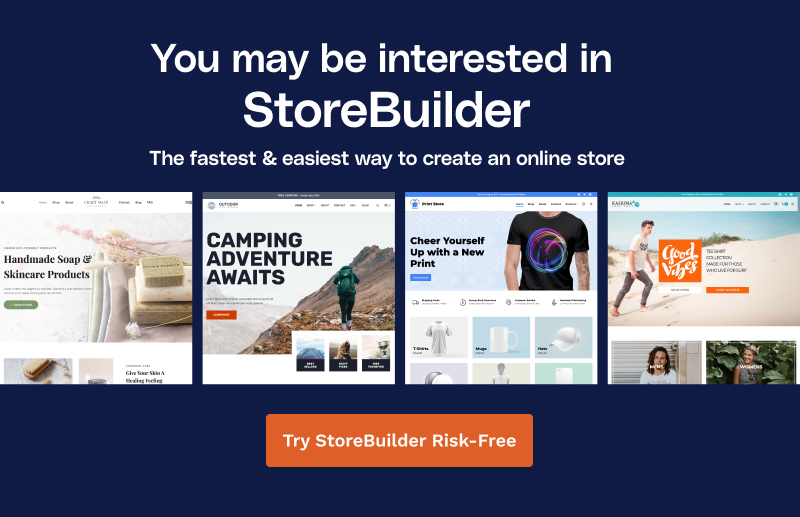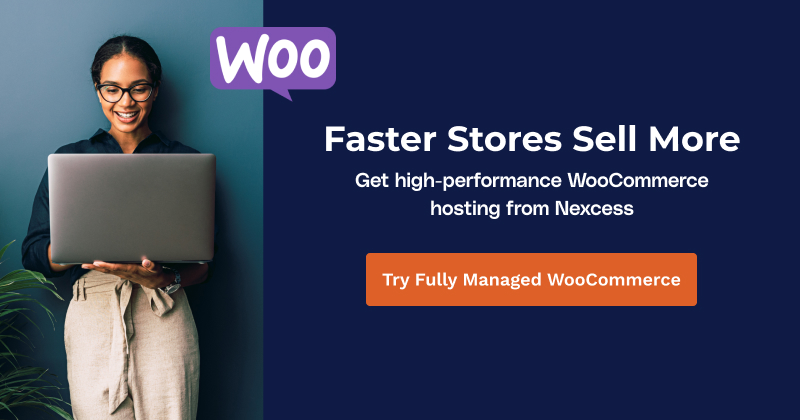Ecommerce is booming, and that upward trend isn’t dying out any time soon. The pandemic led to an unexpected boost in ecommerce sales. Many people found themselves trying out new hobbies and finding ways to make money and find a profitable niche. Maybe you’re like a lot of folks that recently opened an online store — or you’re thinking about how you can start an ecommerce business.
If you’ve opened an ecommerce store, you’re expecting to turn a profit. You’ve probably gotten some sales and have a base of customers, but you’re hitting a sales plateau when you really want to keep climbing.
From which core ecommerce KPIs to track to which ecommerce plugins to use — there’s a lot to consider if ecommerce is new territory for you. You might have a business plan already. Maybe you’ve already chosen a platform or are considering whether a website builder or WordPress is right for you.
When you know the steps to starting an online business, it’s easy enough to spin up a website. But then what?
What you need is a growth strategy for ecommerce.
There are four main areas you should be thinking about when you are strategizing for your ecommerce store’s growth:
- Optimizing Your Site
- Improving Your Customer’s Experience
- Fine Tuning Your Marketing Strategy
- Building Up Community
4-Part Growth Strategy for Ecommerce
Optimizing Your Site
Why is SEO (search engine optimization) important? Because ecommerce SEO directly affects how your site shows up in the search engine results pages (SERPs). If nobody can find your site when they search, you’ll have less traffic and fewer conversions.
When we say you need to optimize, we are primarily talking about performance and the SEO-friendliness of your ecommerce site. Ecommerce optimizations for speed and performance are adjustments you make that directly affect page speed and load times.

Google’s guidelines on what determines page rank changes often enough that optimization isn’t one and done. Optimization is an ongoing process, so keeping the future of SEO in your sights is a sure win for success.
Everyone wants to know how to speed up page load times, and for good reason: it can impact your page rank. There are countless ways to make your site faster, but some of them are easier than others.
- If you’re not familiar with what a Content Delivery Network is, enabling it speeds up your site by increasing the number of sources and locations, making it easier to load quickly.
- Enabling caching for WooCommerce sites is helpful because it “saves” requests and auto directs the same requests to that data, cutting load time down.
- Page weight, or the sum of your page’s resources, can also make it difficult to load. Check out our resource on how to optimize images for WordPress.
- The easiest way to optimize is by picking an ecommerce hosting solution that’s fast and secure.
Having a robust digital content strategy, posting and updating content often, and implementing a link building strategy are also important. So is ensuring that your site is mobile friendly.
If you’re a bit more tech savvy, technical SEO for WordPress is something to consider. Minifying code, ensuring your site navigation is user friendly, and implementing a silo structure for your page structure are all areas that you can optimize.
These ecommerce website features are part of what customers expect to see when visiting your site. Many of these suggestions can be implemented using WordPress performance plugins.
Constantly auditing the SEO for ecommerce websites helps you to climb the ranks, stay competitive, and keep your site fresh.
Improving Your Customer’s Experience
Even though page speed and performance are crucial to the customer experience, that’s not all that matters. The way your site looks and functions has a lot to do with how your customers decide to make a purchase. That’s why taking steps to improve your WordPress UX is important for ecommerce. In fact, it's considered an ecommerce website best practice.
First and foremost, the design of the website is crucial. What your site looks like is the first impression customers get. Stay current on popular website design trends. Your site’s design should be both eye-catching and simple enough for anyone to navigate through.
You can learn how to design a website or outsource the work. Either way, you want a site that isn’t just pretty — it needs to work. When a customer can’t find the item they’re looking for, they’re likely to go to another website, even if pages load instantly. This website design client checklist provides some great guidelines.
All your sales revenue depends on your checkout pages working. Streamlining your checkout. Adding a WooCommerce cart popup can help you increase sales.There are plenty of options for online payment methods you can include on your site, but if customers can’t checkout, they won’t.
Testing regularly ensures your customers never see the tiny, preventable issues before you do. Nexcess provides WooCommerce Automated Testing to run daily checks, including on your checkout page. Or, you can create a test plan for your ecommerce website. Ecommerce UAT, or User Acceptance Testing, is also crucial to your site’s functionality.
Finally, customer service is important for growth strategy because if your customers are upset, nobody is coming back. In this day and age, most people aren’t quiet about poor customer service either. Getting feedback from customers and analyzing it improves the customer service experience.
You’ll want to:
- Train employees on best practices for customer service
- Hire customer support staff if you need to match demand
- Implement a customer support system
- Exploring the best live chat for ecommerce options
- Conduct customer satisfaction surveys
- Analyze customer feedback
At the end of the day, happy customers mean increased sales and customer loyalty. You can’t grow your business without customers.
Fine Tuning Your Marketing Strategy
Opening an online store is a great way to make money, but without an ecommerce marketing strategy, it’s hard to net a profit. Learning how to market a product to your target customers is another important way to strategically grow your business.
Growing your business online often means changing up your strategy and trying new marketing ideas. Wondering how to increase sales online? You may want to offer coupons, run sales, or hold contests.

For many businesses, ecommerce content marketing is responsible for the majority of the traffic that their online stores receive. Increasing ecommerce sales can be as simple as gearing your ecommerce content marketing strategy to utilize keywords strategically and provide breadcrumbs for customers to follow to your website.
Setting goals and tracking results is also part of an effective marketing strategy. Do you know the top ecommerce metrics to track? When you’re focused on what you’re doing well and where you need a boost, you can make more informed decisions about your ad spend budget and which ecommerce channels are of benefit to you.
Ramping up social media efforts is an important growth strategy for ecommerce. As part of your content strategy, a strong social media presence for your small business can be an excellent way to increase sales.
How do you improve conversion rates? You’ve got to be seen before you get a sale! When you post high quality content on a regular basis, you give yourself more chances for people to see your brand. Brand awareness comes before consideration and decision in the buyer’s journey.
Paid marketing strategies, like boosted posts or display ads, can be a very effective marketing tactic. There’s a lot you can do to grow your business with social media.
Some other “free” strategies include crafting better product descriptions. If you don’t know how to write a product description, take a look at your favorite store. Do they get straight to the point, or use flowery language?
When a customer understands what they’re buying, it’s easier to make a purchase sight unseen. Depending on the nature of your business, you can also have fun with it — and possibly go viral for your creative approach.
Great salesmanship can sell a ketchup popsicle to a woman wearing white gloves, but in the ecommerce world, it’s all about targeting your audience. Large companies develop customer profiles so they not only understand their customers better, but they’re also able to fine tune their targeting. Learning how to create a customer profile means learning about your customers and conducting sales data analysis. Sourcing customer feedback and conducting market research is also helpful.
The more effectively you market your ecommerce site, the more your business will grow.
Building Up Community
Everyone from Sephora to your local grocery store has apps, membership communities, and “Top Fan” badges on Facebook. Every one of these items is a way your customers are connected to your brand. It’s how individuals go from customer to ambassador. Ecommerce social media marketing is a jumping off point for building brand awareness.
The most successful ecommerce businesses have legions of fans. Whether official or not, having brand ambassadors means people are talking about your business, your products, and your content. A strong community behind your store is a hallmark of successful ecommerce growth strategy. Enhance your ecommerce store’s social commerce platform and grow your business by generating additional ways for you to connect with customers.
An easy way to do this is by creating a customer loyalty program. It’s a highly successful model. How many of us have Kohl’s Cash burning a hole in our pockets? Customers are incentivized to spend more to get more “points,” and then return to utilize those points. Whether or not they’re actually saving money is often secondary to the perception that they’re getting a deal.
Referral programs are also a great way to build awareness and create conversions. Offer a credit for a specific dollar amount if a friend places an order. It can get you twice the revenue bang for your ad spend buck.
Using social media as a social commerce platform engages with your customers — both potential and existing. Video and carousels on platforms like Instagram for WooCommerce are highly successful and give customers a chance to preview an item before ever getting to your site.
While video content is a big thing right now, another common trend is the VIP group. There are many small businesses that utilize Facebook Groups for their customer base to interact, announce sales, allow customers to ask questions, and ultimately make your business more approachable to customers.
Focused on Ecommerce Growth? Start Planting Now!
There’s nothing more frustrating than doing everything right only to see your efforts dead on the vine. Use these tips in your ecommerce growth strategy to build your customer base and sales. You’ll also want to choose a host that’s made for ecommerce to lay the foundation for success.
When you choose Nexcess, you’re getting curated tools that’ll help you grow your business — not just start it up. With high speeds, tight security, and instant scalability, Managed WooCommerce by Nexcess is just the fertilizer you need for a great season.
Try fully managed WooCommerce hosting today, and let your business grow with us.

